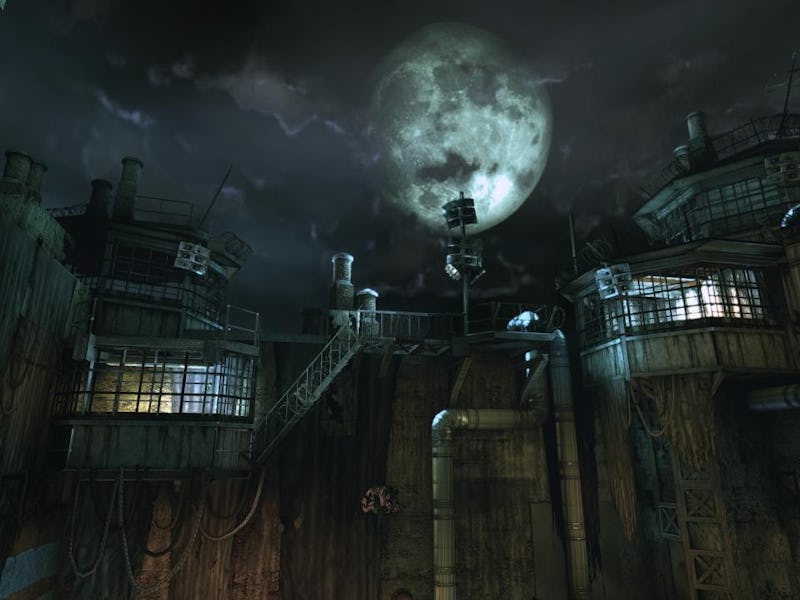13 years ago, Batman changed superhero games forever
Marvel’s Spider-Man owes a lot to this 2009 action game.

Up until 2009, superhero video games were more often than not pretty lame. For every game like Spider-Man 2, there were many more terrible titles like Superman Returns, Catwoman, and Batman: Dark Tomorrow. However, a British developer called Rocksteady Studios came out of the gate swinging with Batman: Arkham Asylum in 2009 which set the new gold standard for comic book action games. Now, 13 years later, Arkham Asylum still holds up as one of the greatest superhero adventures of all time thanks to its impressive world-building, highly influential combat system, and an incredible presentation. It also probably helped that the iconic Kevin Conroy and Mark Hamill voiced Bruce Wayne and the Joker, respectively, reprising their roles from the beloved Batman animated series.
Impeccable design
Arkham Asylum’s smaller world isn’t a weakness. It has far less fluff than modern open-world games that feel artificially massive, with little substance.
There’s debate about whether Arkham Asylum or Arkham City is the better game. The major thing that separates the two is the sense of scale and design. Arguably Arkham Asylum’s greatest strength is its small world and emphasis on linearity.
Sure, Asylum seems tiny compared to modern games, but thanks to the condensed placement of its points of interest, it never feels too small. In fact, this game respects the player’s time much more, offering more meaningful stories and objectives rather than a bunch of fluff. It’s large enough to offer meaningful exploration, without feeling too big.
This, when combined with its light Metroidvania elements give it such a distinct gameplay loop that makes it hard to put down. For instance, when you come across breakable walls early on, you can’t get through them. But after you finally get your hands on the Explosive Gel, a lightbulb goes off, and you think of all the new places you can explore.
It’s such a simple, yet effective design choice that encourages players to explore every nook and cranny of Arkham Island.
Free flowing combat
Batman: Arkham Asylum’s iconic freeflow combat system gets copied to this day.
Arkham Asylum is also famous for its freeflow combat system, which still gets copied to this day. It goes beyond simply letting you punch and kick bad guys. Instead, Batman can jump over goons, grapple them, use takedowns, counters, and implement his plethora of gadgets to keep his combo going — all in a fluid motion.
You’re encouraged to keep the combo going, because the higher your combo, the bigger your multiplier, which results in more XP. It’s not a straightforward combat system, by any means, but once you get into the flow of attacking, dodging, and mixing up your strikes, it becomes so much more satisfying. Eventually, you can get through battles without even getting touched.
On top of the more aggressive combat style is a robust stealth system that feels just as fleshed out. Sticking to the shadows and taking out enemies without being seen is in your best interest — and the more enemies you take out this way, the more fear you instill in the ones who remain. By the time you get to the last enemy, they’re often seen trembling as they walk around, hoping you’ll go away.
Giving players the option to choose between stealth or traditional hand-to-hand combat just works so well, and truly ties to who Batman is as a character. This respect for the source material gives Arkham Asylum more of an edge.
Immaculate presentation
This game still looks awe-inspiring, even when compared to modern releases.
Tying everything together is a stunning presentation from its overall art direction to its character design, and acting. It feels so much more official thanks to Kevin Conroy and Mark Hamill reprising their roles as Batman/Bruce Wayne and Joker, respectively. This made it feel expensive and cinematic, leaning closer to an animated series at times, rather than a video game.
Likewise, the game’s enemy design is just so memorable, especially the Scarecrow sections. These sequences require Batman to escape from nightmarish levels while avoiding the Scarecrow's deadly gaze. It would have been simpler to just make this an action-packed boss fight, but given the Scarecrow’s emphasis on fear — which often feels surreal — these sections make much more sense. The horrifying sounds and visuals during these stages add tension and weight, without making you fight in a traditional sense. Once again, this proves just how in tune with the source material developer Rocksteady was.
There are also several moments in which Batman glides across the dark sky with the moon in the background while it’s raining and it’s still jaw-droppingly gorgeous even 13 years after.
While many modern superhero games like Marvel’s Spider-Man and Infamous Second Son might be technically superior to Arkham Asylum, they owe a lot to Rocksteady’s 2009 masterpiece. It proved that superhero games can steal the show, leaving a lasting legacy over a decade later.